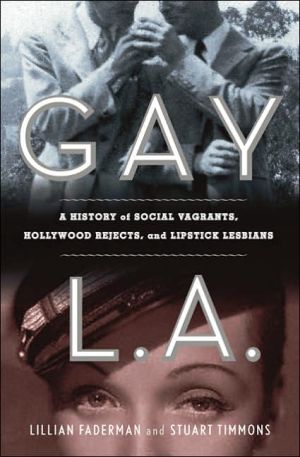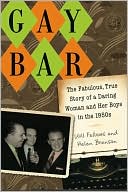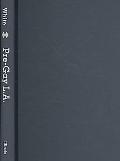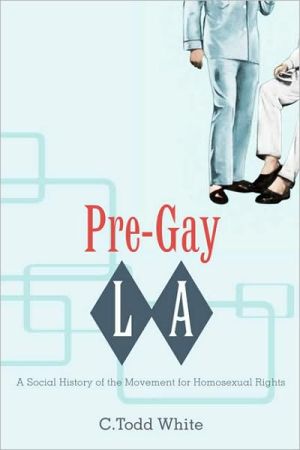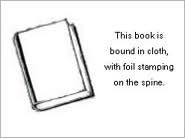Gay L.A.: A History of Social Vagrants, Hollywood Rejects, and Lipstick Lesbians
The exhortation to "Go West!" has always had a strong hold on the American imagination. But for the gays, lesbians, and transgendered people who have moved to L.A. over the past two centuries, the City of Angels has offered a special home—which, in turn, gave rise to one of the most influential gay cultures in the world. Drawing upon untouched archives of documents and photographs and over 200 new interviews, Lillian Faderman and Stuart Timmons chart L.A.'s unique gay history, from the first...
Search in google:
Award-winning historian Lillian Faderman teams with journalist Stuart Timmons to write the first history of gay life in America's ultimate frontier town: Los Angeles The Washington Post - Charles Kaiser Many of the stories told here will be familiar to students of gay subjects. But neophytes will be astonished by the breadth and depth of gay history in Los Angeles that is revealed in these pages.
\ Charles KaiserMany of the stories told here will be familiar to students of gay subjects. But neophytes will be astonished by the breadth and depth of gay history in Los Angeles that is revealed in these pages.\ — The Washington Post\ \ \ \ \ Publishers WeeklyThis social, political and cultural history of lesbian and gay life in Los Angeles by two seasoned historians is easily the subject's definitive work. Presenting a wealth of fact and analysis, Faderman (Odd Girls and Twilight Lovers) and Timmons (The Trouble with Harry Hay) breeze through the highlights of L.A. gay history. They begin with the suppression of Native Americans' sexual and gender expression by 16th-century Spanish missionaries, before exploring how gender-bending Hollywood stars such as Garbo and Katharine Hepburn shaped popular culture in the 1930s; the emergence of gay public places during the '40s and '50s; and the influence of gay religious groups in the 1970s. While much gay history has centered on white gay men, the authors add important material about the vital role of lesbians and people of color, such as Helen Sandoz and Anne Carll Reid, who worked to bridge the gender gap in 1950s homosexual politics. Although this popular history doesn't strive for academic comprehensiveness, it's filled with illuminating facts such as that gay men rioted and protested for several days after police raided the Black Cat bar in 1967, two years before the Stonewall Riots in New York. 16 pages of b&w photos. (Oct.) Copyright 2006 Reed Business Information.\ \ \ Library JournalIn the dozen years since George Chauncey's Gay New York, queer community studies have proliferated. But while Philadelphia, Seattle, San Francisco, Memphis, and other cities have each received book-length treatment, Los Angeles has been inexplicably overlooked. Historian Faderman (Naked in the Promised Land) and journalist Timmons rectify this oversight in the magisterial Gay L.A. With a narrative that stretches from the humane tolerance of pre-contact indigenous peoples, through the 20th-century crisis years of homophobia and AIDS and ultimately into the victories and setbacks in this century, the authors necessarily condense much. But their remarkable capacity for sharp, vivid description, buttressed by an impressive research regimen that included new interviews, makes Gay L.A. insightful, comprehensive, and fluid. Faderman and Timmons make an irrefutable case for the importance of the city to queer history, and they astutely depict the internal fault lines of the "gay community," which has often splintered along racial, class, and especially gender lines but which has also showed itself capable of coalescing in the face of crisis. Full of fascinating anecdotes (including much on Hollywood), wise and fair analysis, and significant and inspiring examples of courageous resistance recaptured from the unwritten histories of the past, Gay L.A. deserves a prominent place in every library.-Whitney Strub, doctoral candidate, UCLA Copyright 2006 Reed Business Information.\ \ \ \ \ Kirkus ReviewsAn exceptionally literate, overstuffed chronicle of gay Tinseltown. In alternating sections on Los Angeles lesbians and gay men, historian Faderman (Naked in the Promised Land, 2003, etc.) and freelance journalist Timmons, respectively, deliver an exhaustive account. Beginning in the 1880s, both groups migrated in droves from less liberal locales to freewheeling, anonymous Southern California, and a supportive, unified community emerged even as laws against sodomy and "masquerading" (i.e., cross-dressing) kept guard over the city's bedrooms. These enterprising pioneers were soon followed by vaudeville exiles who flocked to Hollywood and built its entertainment foundation. Post-Prohibition nightclubs catered to such "sexually flexible" entertainers as Marlene Dietrich, James Cagney and Mae West. The years after WWII saw a boom in gay meeting places-beaches, bars, clubs, public parks for men, city streets and restaurant lounges for women-even though all of them were subjected to aggressive, relentless Vice Squad raids. Small neighborhood enclaves of gays and lesbians began to materialize, creating refuges that sparked the mid-'60s gay organization PRIDE (Personal Rights in Defense and Education), whose "Pride Night" meetings were all-encompassing gay-empowerment events. The interracial homophile group ONE, the social-justice-oriented Mattachine and the lesbian political equality organization Daughters of Bilitis proved worthy precursors and paved the way toward the 1969 Stonewall Rebellion. The openly gay and lesbian population continued to skyrocket during the '70s, and that lively era gives the book's prose a shot in the arm as the authors describe the revitalized L.A. demographic, thepink neon discos of West Hollywood and a community center disseminating vital information about the AIDS epidemic. Among the timely issues affecting gay youth today that get spirited discussion are the questions of gender and identity. Both authors are Californians, and their love of Hollywood history and lore shines bright. Vital intellectual fare brimming with fascinating history.\ \
